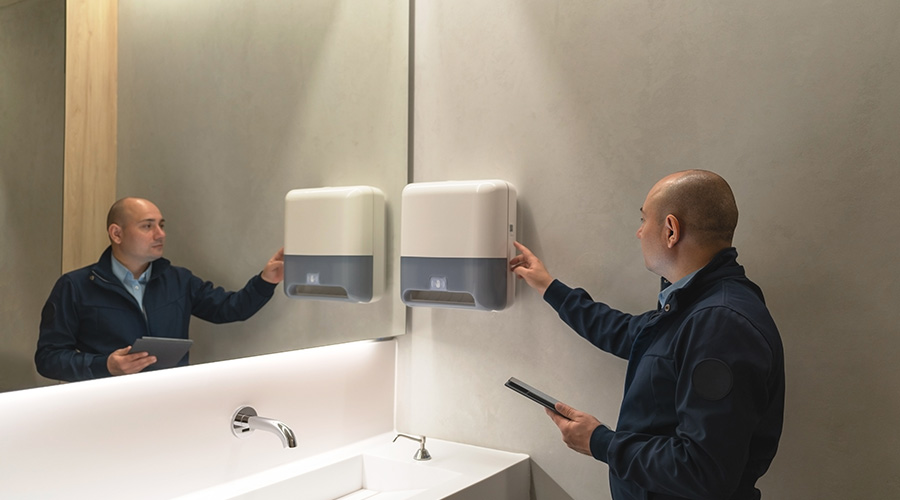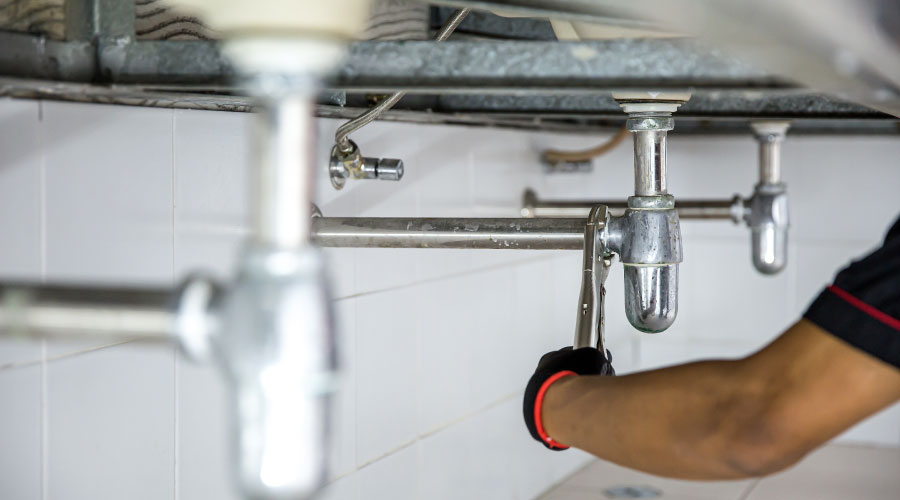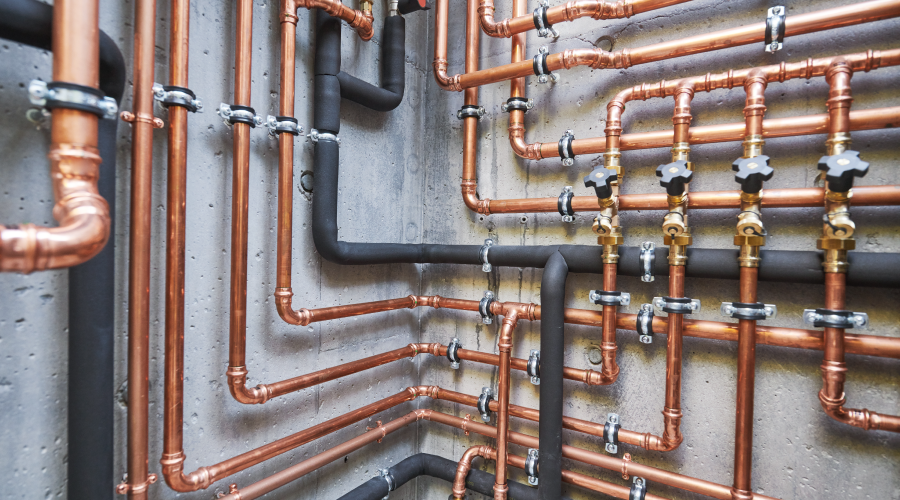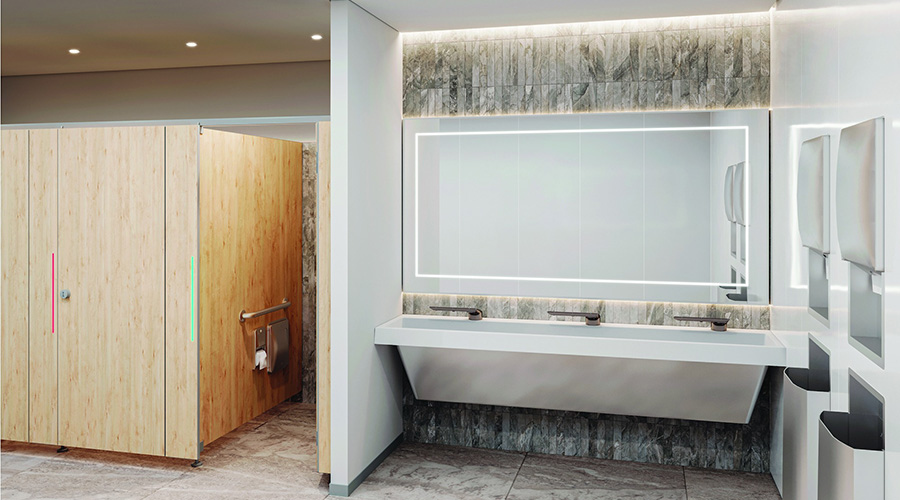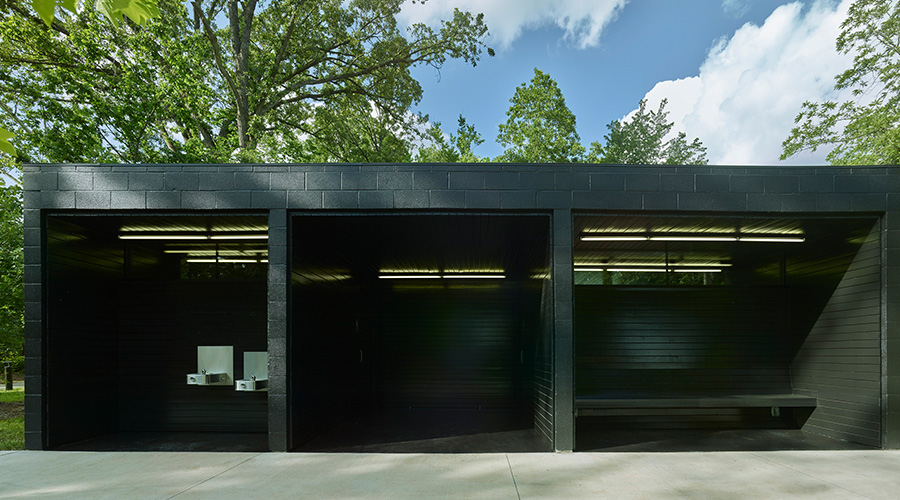New Restroom Fixture Technology Boosts User Experience
Connected devices assist managers in monitoring restroom use, condition.
Lighting, energy and other building systems have long been smart, or connected. Institutional and commercial restrooms are joining the group. Smart devices can help facility managers more effectively maintain and operate restrooms, while also improving the user experience.
Smart restroom technologies incorporate networks of Bluetooth or Internet of Things connected devices, says Paul McLennan, manager of advanced engineering with Delta Commercial. Smart restrooms may also be connected to building management systems (BMS), so facility staff can quickly and remotely monitor their status, he adds.
For example, a smart restroom might incorporate a device that allows the facility staff to remotely monitor a connected plumbing system, says Bob Carter, product manager, finished plumbing, with Zurn Elkay Water Solutions. By analyzing the real time data collected, such as the amount of battery life left in a device, managers can schedule its replacement rather than waiting until the battery dies, and the device doesn’t work.
Benefits of going smart
A key benefit of smart restrooms is their ability to help managers achieve predictive maintenance. Smart systems can track usage to determine when to perform maintenance, as well as the kind of maintenance required.
“If a fixture has reached a certain allotment of flushes, you know that it may be time to proactively change the diaphragm,” says Solay Alagappan, Sloan senior product line manager, IoT and programmed water technologies (PWT).
When preventive maintenance can be scheduled, restroom users are less likely to come across devices that don’t work or empty soap or paper dispensers. In other words, the restrooms appear well-taken care of, says Orkun Onur, senior product manager, commercial faucets and IoT with Kohler. This can help a facility avoid hits to its reputation.
What’s more, by scheduling maintenance work so it’s efficiently handled, smart restrooms can help alleviate the labor issues many facilities teams face today. With traditional devices, a maintenance worker might receive an email or call about a malfunctioning faucet, but until stepping inside the room, he or she likely wouldn’t know which faucet or model it was, nor which part was malfunctioning, Onur says. While many facilities initially install standard device models, they can wind up with a variety of models as malfunctioning ones are replaced.
Instead of a quick fix, a staff member might spend hours on a repair, Onur says. With smart systems, managers have much of the information he or she needs to fix a device before starting a repair job.
In addition, replacements can be more targeted. Rather than replacing, for instance, the diaphragm on all flush valves in a restroom because it seems like it’s time, managers can identify those that have been used enough times that they need replacing.
“You're really pinpointing it. That cuts down on the number of repair parts and the labor required,” Carter says.
Safety and cleanliness
Smart restrooms enable technicians to automatically perform line flushes, which helps to prevent the formation of biofilms that can serve as a breeding ground for bacteria, Alagappan says. The spread of Legionella, which causes Legionnaires' disease and Pontiac fever, is a major concern in hospitals and facilities that house aging populations who are vulnerable to the bacteria. Automatic line flushes are also important for purging the water in faucet lines in facilities that may be closed for extended periods of time, like schools, he adds.
Similarly, if hot water cools because a system hasn’t been used, it can become a breeding ground for bacteria, says Greg Hunt, product manager, commercial, with Chicago Faucets. This also can pose risks in healthcare settings. If a patient who is immune-compromised moves into a room in which the faucet hasn’t been used for three or four days, a waterborne pathogen could potentially become active, he says.
In healthcare settings, occupancy lights in individual stalls can be set to issue an alert after a certain amount of time, Carter says. If a user remains in the stall for more than 20 minutes, an employee can check to ensure he or she didn’t suffer a medical event.
At times, an occupancy light system might show that an individual walked into a stall and then walked out a second or two later. If this continues for several people, it’s likely the stall requires servicing, Carter says.
It’s important to note that smart devices capture information on the use of a restroom, but not personal information.
“You can only tell overall how many people used the restroom,” Onur says.
Karen Kroll is a freelance writer based in the Twin Cities in Minnesota.
Related Topics:








